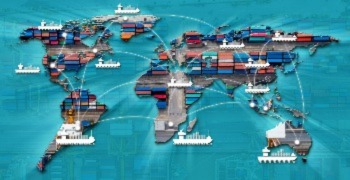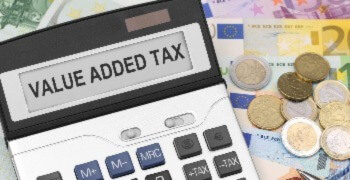
Managing the sales tax-exempt customer experience
By implementing an effective and efficient process for requesting and verifying U.S. sales tax exemption certificates, you can improve the customer experience for your tax-exempt buyers. Let’s take a look at how it can be done.
3 ways exemptions can affect the customer experience
1. Delays with orders
There are several points during a tax-exempt transaction where delays can occur:
Requesting certificates: Your customer must provide you with a U.S. sales tax exemption certificate during a tax-exempt transaction. You’ll need these certificates to prove why you didn’t charge U.S. sales tax. However, if you’re unsure how to request the certificate or you use an inefficient method of communication, it could cause frustrating delays for the buyer.
Verifying certificates: Businesses outside of the U.S. that are unfamiliar with the rules surrounding U.S. sales tax exemptions might take too long to verify certificates, thereby delaying an order. Make sure you research what exemption certificates look like in each U.S. state you operate in, so you know exactly what information to look for during verification.
Issues with certificates: Do you know what to do if you receive a certificate with incorrect information or one that’s expired? If a certificate doesn’t pass verification, and you hesitate over what to do next, it may hold up the order.
Reducing delays during a transaction is essential, as the customer may cancel their order entirely if it’s a time-sensitive purchase.
2. Stalled invoices
Any invoices you send to your customers should list the amount of U.S. sales tax due on the purchase, as it forms part of the final landed cost, and you cannot send an invoice without listing the final price. Even with a tax-exempt transaction, the invoice must acknowledge the fact that tax was not charged (e.g., by listing the tax due as $0.00 or by stating outright that the buyer has a U.S. sales tax exemption).
If you’re unfamiliar with processing tax-exempt transactions, this can lead to delays, which in turn can stall your invoice. Without an invoice, your customers will not pay for your goods or services, which could cause cash flow problems. Sending a late invoice could even cause financial issues for the customer, as the invoice will arrive after they hoped to pay it and their financial situation may have changed.
3. Burdening customers with documentation requests
It’s the responsibility of the buyer to present a valid U.S. sales tax exemption certificate if they believe a particular transaction should be tax exempt. However, in many instances — if you’ve been presented with an incorrect certificate and need a valid one, or if it’s a regular customer you know to be tax exempt, for example — you may need to send a request for an exemption certificate.
Although it’s a legal necessity for a tax-exempt transaction, some customers may find requests for exemption certificates burdensome, especially if the request is made at an awkward time or worded in an unnecessarily complex way. Feeling pressured to provide paperwork that they may not fully understand can negatively impact some customers’ experiences.
How you can provide a streamlined customer experience
Effectively managing the customer experience means doing all you can to reduce the risk of the complications we’ve listed. To help you, we’ve provided two strategies below that can help streamline your tax-exempt transactions.
Practise good communication
Fast and frequent communication is always helpful during tax-exempt transactions, but it’s particularly important if there are any issues when verifying exemption certificates. If the buyer has presented an expired or otherwise invalid certificate, it’s vital that you inform them as soon as possible so it doesn’t impact the speed of the sale.
Clarity is also crucial. You shouldn’t burden your buyer with every single detail of tax law — stick to the points that are relevant to them. However, if they need to know more, you should be available to answer questions. Similarly, you should make sure any certificate requests are succinct and to the point.
In general, a key goal of communication during a tax-exempt transaction is ensuring the buyer is aware of their tax obligations. While it’s technically the buyer’s legal responsibility to determine the tax status of transactions, if you (as the seller) are aware that a particular transaction should be tax exempt, it’s important to mention it.
Prioritise efficiency
Although staying compliant is more important than being fast, it’s possible to do both. Being efficient during a tax-exempt transaction prevents delays that could affect the customer experience.
Requesting exemption certificates promptly is a good start, as this leaves plenty of time for certificates to be presented. If you ask for certificates at the last minute and there are any issues, it can disrupt the order process and delay the sale.
Similarly, completing the verification process as quickly as possible to prevent orders from being delayed is important, but accuracy is equally crucial. If you don’t have a lot of experience with U.S. sales tax compliance, and find verifying exemption certificates difficult, consider a digital verification solution.
A better way to store and verify U.S. sales tax exemption certificates
Automating exemption certificate management processes can increase speed and efficiency, while reducing the risk of human error. All these factors have the potential to massively improve the customer experience.
Avalara Exemption Certificate Management can make it easier to request, store, and reference certificates, and can help verify certificates with more accuracy.
If you’re looking for additional information on managing exemption certificates, you can also watch our webinar on managing tax-exempt sales.
Disclaimer
Tax rates, rules, and regulations change frequently. Although we hope you'll find this information helpful, this article is for informational purposes only and does not provide legal or tax advice.
Stay up to date
Sign up today for our free newsletter and receive the latest indirect tax updates impacting businesses selling internationally straight to your inbox.




